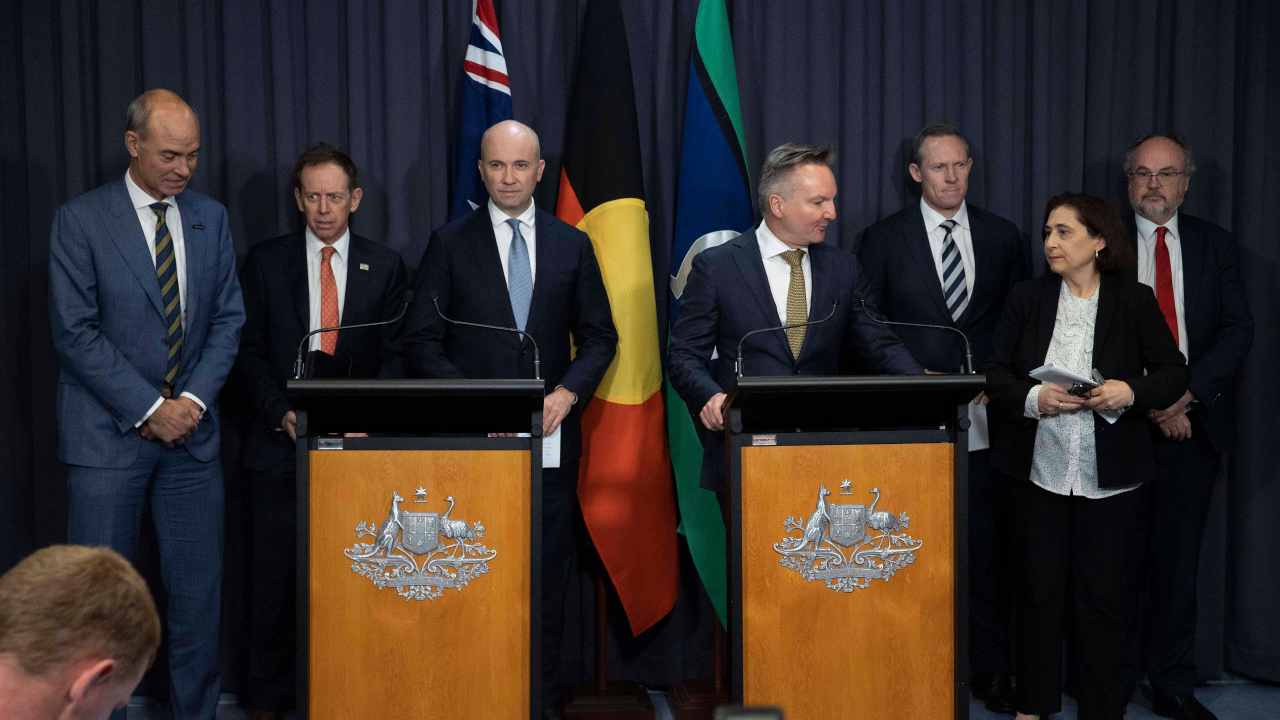State, territory and federal energy ministers have started the process for significant reforms to Australia’s energy future.
The ministers met on Friday in Canberra where they received a briefing from energy market operators and the consumer watchdog on expected gas and electricity shortfalls in 2023 and 2024.
On top of the agenda was the establishment of a new National Energy Transformation Partnership (NETP) to better collaborate on Australia’s transition to greater reliance on renewables in the electricity grid.
Federal Climate and Energy Minister Chris Bowen announced that as part of the new NETP, emissions reduction would be included in the national energy objectives for market operators.
Stream more on politics with Flash. 25+ news channels in 1 place. New to Flash? Try 1 month free. Offer ends October 31, 2022
Mr Bowen said the decision would send a “very clear” message of certainty to investors and would ensure emissions reduction is at the forefront of every aspect of energy market operators’ functions.
“This might not sound much, this is the first change to the national energy objectives in 15 years this is important,” he said in Canberra on Friday.
“It sends a very clear direction to our energy market operators that they must include emissions reduction in the work that they do.
“And the message of certainty to investors in renewable energy and transition and storage around the world that Australia is open for business, Australia is determined to reduce emissions.
“And we welcome investment to achieve it and we will provide a stable and certain policy framework.”
The ministers also agreed to extend the powers of the Australian Energy Market Operator (AEMO) to better manage east coast supply shortfall risks.
It will also provide AEMO with the option of direct market participation ahead of winter 2023.
In its interim gas report, the Australian consumer watchdog warned of a serious shortfall in natural gas in 2023.
The Australian Competition and Consumer Commissions (ACCC) said LNG exporters needed to redirect excess supplies to the domestic market or Australia would risk its energy security heading into next year.
It comes after AEMO intervened in the Victorian gas market to redirect excess supply from Queensland producers to avoid mass shortages in the southern state – using its emergency mechanism for the second time in history.
The ministers joined the ACCC in calling for producers to redirect excess gas to the domestic consumers rather than the lucrative export market.
NSW Energy Minister Matt Kean said it was a “non-negotiable” for his state when it came to protecting households and businesses.
“What we don’t want to see is domestic gas producers prioritizing profits and exports ahead of local users, that is a non-negotiable for us in New South Wales,” he said.
“There is going to be a shortfall in gas in 2023 and 2024. That shortfall needs to be met.
“And what we need to do is prioritize Australian gas for Australian gas users ahead of companies making super profits and exporting that gas offshore.”
His Victorian counterpart Lily D’Ambrosio shared the concerns and said the country produced “more than sufficient gas” to meet domestic needs but “too much of it was sent overseas”.
“And that’s got to change and that’s really the task of all of us and we’re all up for it. And we’ve all agreed about how we can go about doing that,” she said.
On top of the gas market reforms, the ministers also discussed a future capacity mechanism to ensure firming power in the grid during the transition away from coal.
Senior federal and jurisdictional officials have now been charged to provide options for a framework which delivers “adequate capacity, ensures orderly transition, and incentivises new investment in firm renewable energy.”
“Ministers intend to take a more active role in delivering the firming capacity needed as the system transforms and consider the best means to manage the risks of a disorderly exit of coal generation,” the joint communique said.
.


